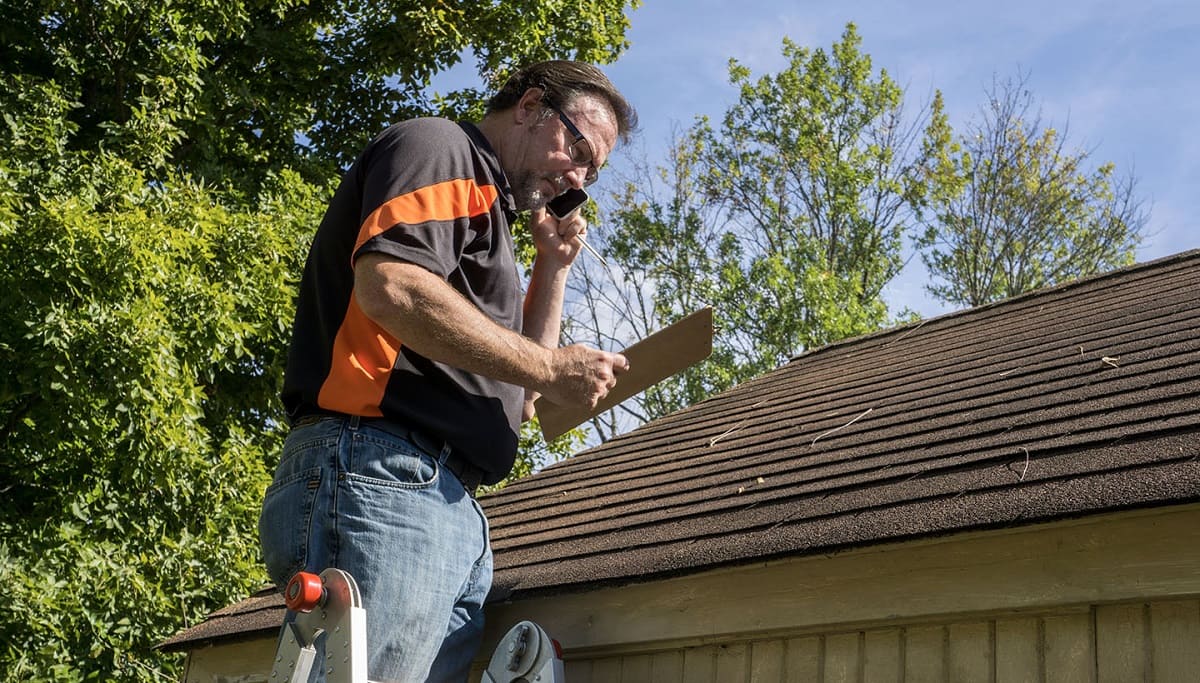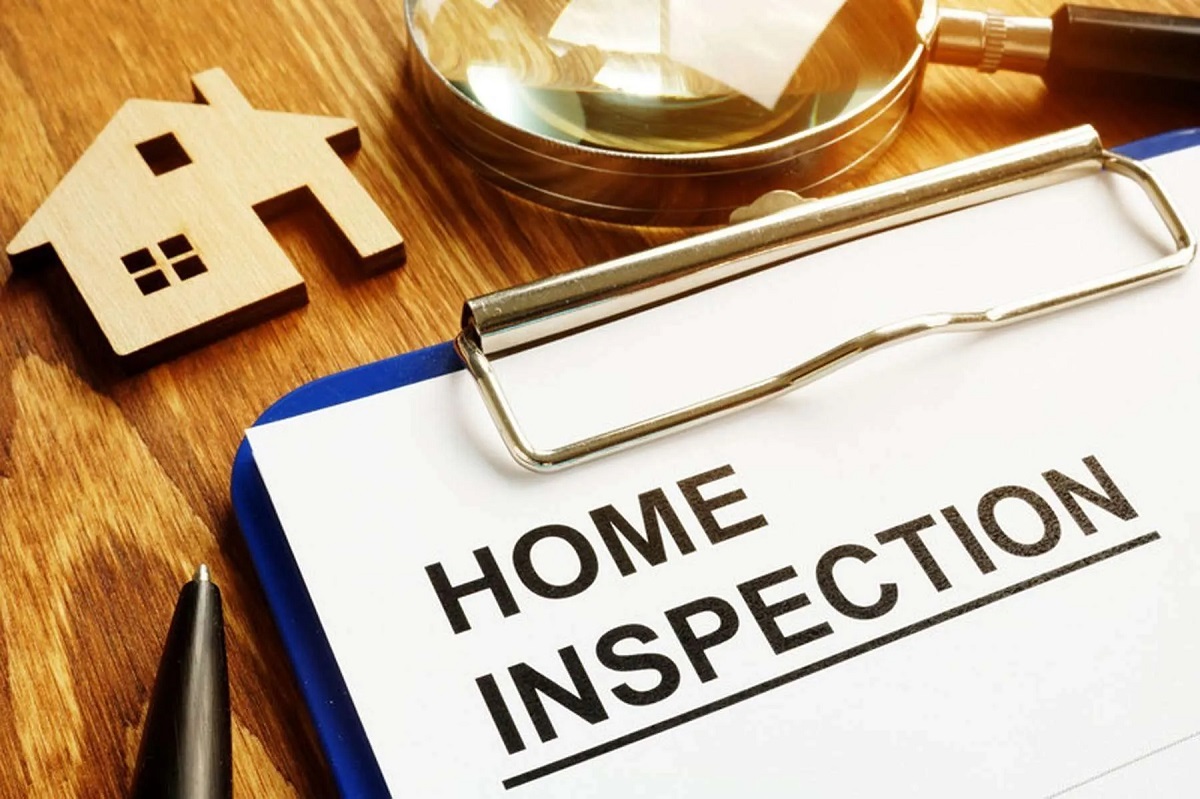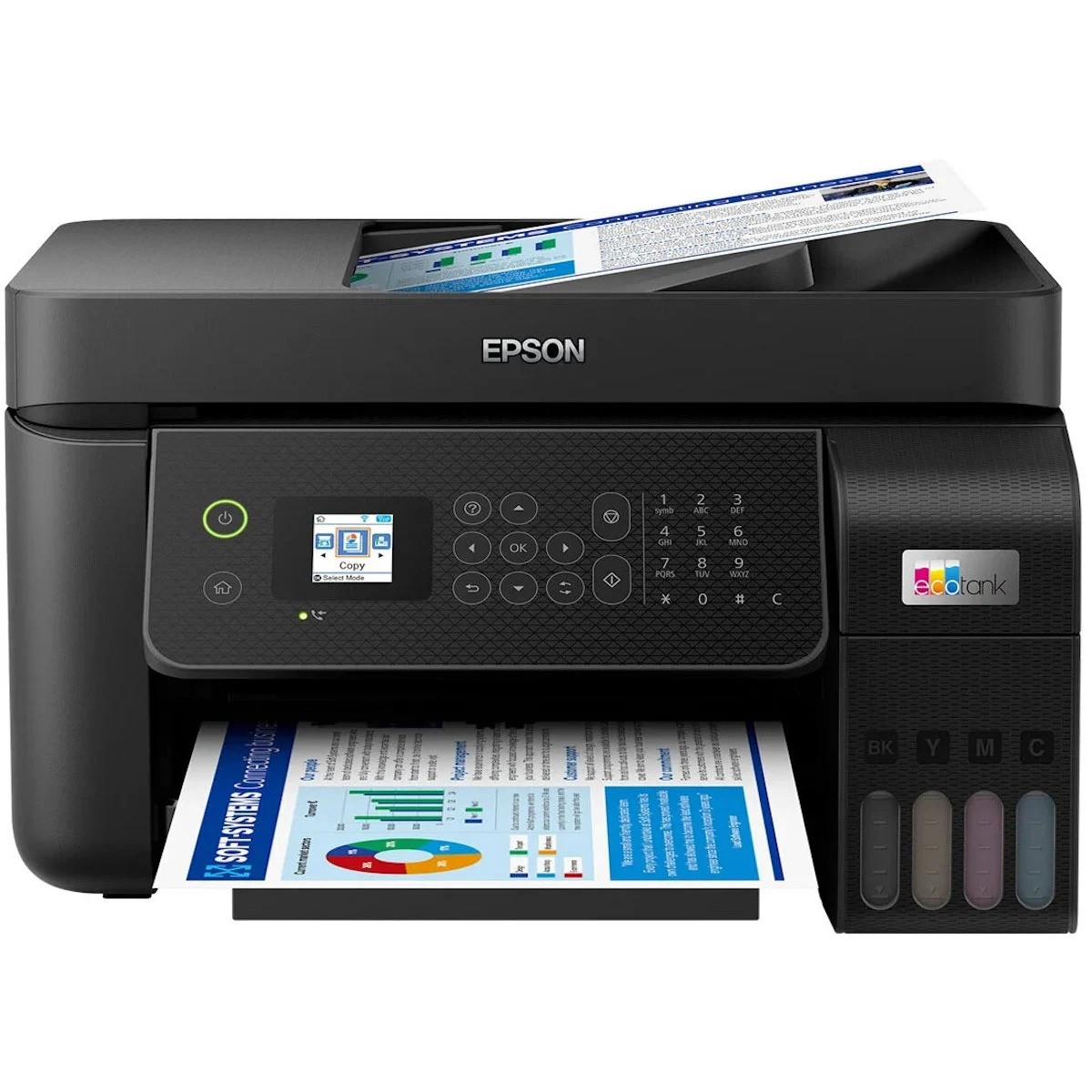Home>Home Maintenance>How To Communicate To Buyers That You Won’t Fix Certain Issues During The Inspection Period


Home Maintenance
How To Communicate To Buyers That You Won’t Fix Certain Issues During The Inspection Period
Modified: March 6, 2024
Learn how to effectively communicate to home buyers that you will not be responsible for repairing certain issues during the inspection period. Gain insights on home maintenance strategies.
(Many of the links in this article redirect to a specific reviewed product. Your purchase of these products through affiliate links helps to generate commission for Storables.com, at no extra cost. Learn more)
Introduction
Welcome to our guide on how to effectively communicate to buyers that you won’t fix certain issues during the inspection period. The inspection period is a crucial phase in the home-buying process, where buyers have the opportunity to assess the condition of the property and request repairs or negotiate on any issues that may arise. However, as a seller, you may have certain issues that you are not willing or able to address. It is essential to effectively communicate these non-negotiable issues to buyers in order to avoid misunderstandings, delays, and potential conflicts.
Understanding how to convey this information clearly and professionally is vital for maintaining transparency and ensuring a smooth transaction. In this article, we will guide you through the steps to identify, communicate, and document the non-negotiable issues during the inspection period, while still maintaining a positive buying experience for potential buyers.
Key Takeaways:
- Clearly communicate non-negotiable issues to buyers during the home inspection period. Be transparent, offer alternatives, and document agreements to ensure a smooth and trustworthy process.
- Understand the inspection period, identify non-negotiable issues, and communicate them effectively to buyers. Set clear expectations, provide alternatives, and document agreements for a successful home sale.
Understanding the Inspection Period
The inspection period is a critical phase in the home-buying process. It typically occurs after the buyer and seller have entered into a purchase agreement but before the final closing. During this period, the buyer has the opportunity to hire a professional home inspector to thoroughly assess the property’s condition and identify any potential issues.
The purpose of the inspection is to provide the buyer with a clear understanding of the property’s condition and any potential repairs or maintenance it may require. It is common for the buyer to present a list of repair requests or negotiate for credits or price reductions based on the inspection findings.
As a seller, it is important to be aware that buyers will likely have repair requests or concerns during the inspection period. Some of these requests may involve significant issues that require immediate attention, while others may be more minor cosmetic or maintenance-related tasks. It is up to you, as the seller, to determine which issues you are willing to address and which you are not.
While it is common for sellers to make some repairs or provide credits for repairs, there may be instances where you have valid reasons for not addressing certain issues. These non-negotiable issues could be due to financial constraints, time constraints, or simply personal preferences. It is essential to understand and communicate these non-negotiable issues clearly to prospective buyers to avoid any misunderstandings or conflicts down the line.
By understanding the inspection period and its purpose, you can better navigate the process of communicating your non-negotiable issues to buyers and establish realistic expectations.
Identifying the Non-Negotiable Issues
Identifying the non-negotiable issues during the inspection period is a crucial step in effectively communicating with buyers. It requires careful consideration and a thorough assessment of the property’s condition.
Start by reviewing the inspection report provided by the home inspector. The report will highlight any issues that were identified during the inspection, ranging from major structural concerns to minor cosmetic imperfections. Take note of the issues that are of utmost importance to you and determine which ones you are unwilling or unable to address.
Consider the following factors when identifying the non-negotiable issues:
- Severity: Assess the severity of each issue and prioritize accordingly. Issues that pose significant safety hazards or require immediate attention may be non-negotiable, while minor cosmetic issues may be more flexible.
- Cost: Calculate the cost of addressing each issue. If the repairs or fixes are beyond your budget or would significantly reduce your profit, they may be considered non-negotiable.
- Time constraints: Evaluate whether you have sufficient time to address the issues before the closing date. If the repairs require extensive time and you cannot meet the deadline, they may be non-negotiable.
- Personal preferences: Take into account your personal preferences when deciding on non-negotiable issues. For example, if the buyer requests changes that would significantly alter the property’s character or design, you may choose not to accommodate those requests.
- Legal obligations: Familiarize yourself with any legal obligations or disclosure requirements in your area. Some issues may need to be disclosed regardless of whether the buyer requests repairs or not.
By carefully considering each of these factors, you can identify the non-negotiable issues that you will communicate to potential buyers during the inspection period.
Communicating the Non-Negotiable Issues to Buyers
Once you have identified the non-negotiable issues during the inspection period, the next step is to effectively communicate these issues to potential buyers. It is crucial to approach this communication with transparency, professionalism, and clear expectations to avoid misunderstandings and maintain a positive buyer-seller relationship.
Here are some tips to help you communicate non-negotiable issues to buyers:
- Be proactive: Rather than waiting for the buyer to submit repair requests, take the initiative to inform them upfront about the non-negotiable issues. This can be done verbally during a conversation or written in a clear and concise manner in a formal document.
- Provide detailed explanations: Clearly explain the reasons why you are unable or unwilling to address the non-negotiable issues. Be honest and transparent about any financial constraints, time limitations, or personal reasons behind your decision.
- Offer alternatives: Instead of simply stating that you won’t fix the issues, provide alternative solutions or options. For example, you could offer a credit towards the closing costs or provide a list of reputable contractors who could address the issues at the buyer’s expense.
- Set realistic expectations: Make sure to manage the buyer’s expectations regarding the non-negotiable issues. Clearly communicate the impact of these issues on the property and emphasize that they have been considered in the pricing of the home.
- Encourage dialogue: Allow the buyer to ask questions and express their concerns about the non-negotiable issues. Be open to discussing potential compromises or alternative solutions that could satisfy both parties.
- Document the communication: To protect both parties, document all verbal and written communication regarding the non-negotiable issues. This reduces the risk of misunderstanding or disputes in the future and provides a clear record of the agreed-upon terms.
Remember, effective communication is key to maintaining a positive buyer-seller relationship during the inspection period. By being proactive, transparent, and offering alternative solutions, you can communicate non-negotiable issues in a professional and respectful manner.
Be upfront and clear in your listing or during negotiations about which issues you won’t fix. Provide a detailed explanation for your decision to help buyers understand.
Setting Clear Expectations
Setting clear expectations with buyers during the home inspection period is crucial to avoid misunderstandings and ensure a smooth transaction. By clearly communicating your stance on non-negotiable issues and outlining the next steps, you establish a transparent and well-defined process.
Here are some tips for setting clear expectations:
- Outline your position: Clearly communicate to the buyer that there are certain issues you are unable or unwilling to address. Reiterate the reasons behind your decision and provide any supporting documentation or evidence if necessary.
- Explain the impact: Help the buyer understand the impact of the non-negotiable issues on the property and its price. Explain how these issues have been factored into the listing price or provide any relevant market data to support your position.
- Discuss potential remedies: If applicable, discuss potential remedies or alternative solutions for the non-negotiable issues. Offer suggestions for the buyer to consider, such as obtaining quotes from contractors or seeking specialized inspections for specific concerns.
- Discuss negotiation options: If the buyer still wishes to negotiate on the non-negotiable issues, discuss any potential negotiation options or compromises that could be explored. Be open to finding mutually beneficial solutions.
- Clearly state your final decision: Once all discussions and negotiations have taken place, clearly state your final decision regarding the non-negotiable issues. This will provide clarity and avoid any confusion moving forward.
- Document the agreed-upon terms: To avoid any future disputes, make sure to document the agreed-upon terms regarding the non-negotiable issues. This can be done in writing, such as through an addendum to the purchase agreement, to ensure both parties are on the same page.
By setting clear expectations, you establish a transparent framework for addressing non-negotiable issues during the inspection period. This promotes a smoother transaction and reduces the chances of misunderstandings or conflicts arising.
Providing Alternative Solutions
When communicating non-negotiable issues to buyers during the inspection period, it’s important to offer alternative solutions to address their concerns. While you may not be able to fix certain issues, providing alternatives shows your willingness to work with the buyer and find mutually beneficial solutions.
Here are some alternative solutions you can consider:
- Credit towards closing costs: Offer a credit towards the buyer’s closing costs that can be used to address the non-negotiable issues. This provides the buyer with financial assistance to handle the repairs on their terms.
- Home warranty: Consider purchasing a home warranty as part of the sale. A home warranty can provide the buyer with coverage for certain repairs or replacements, easing their concerns about the non-negotiable issues.
- Obtain quotes from contractors: If the non-negotiable issues are major repairs or renovations, you can provide the buyer with a list of reputable contractors who can assess the issues and provide estimated costs. This allows the buyer to have a clear understanding of the expenses involved and make an informed decision.
- Suggest specialized inspections: If there are specific concerns or non-negotiable issues, recommend that the buyer hire specialized inspectors to further evaluate those areas. For example, if there are concerns about the plumbing or electrical systems, a licensed plumber or electrician can provide a more detailed assessment.
- Amend the purchase price: In some cases, you may need to revisit the purchase price based on the non-negotiable issues. If the issues significantly affect the value of the property, consider negotiating a price reduction that reflects the necessary repairs or maintenance.
- Provide documentation and receipts: If you’ve previously addressed any of the non-negotiable issues but cannot make further repairs, provide documentation and receipts that demonstrate the steps you’ve taken to resolve those issues in the past.
By offering alternative solutions, you show buyers that you are committed to finding a resolution, even if it may not involve directly addressing the non-negotiable issues. This demonstrates flexibility and can help alleviate concerns during the inspection period.
Documenting the Non-Negotiable Issues
During the home inspection period, it is essential to document the non-negotiable issues to ensure clarity and protect both parties involved in the transaction. Proper documentation helps avoid misunderstandings and disputes down the line, providing a clear record of the agreed-upon terms.
Here are some important steps for documenting the non-negotiable issues:
- Written communication: Maintain a written record of all communication related to the non-negotiable issues. This can include emails, letters, or a document outlining the issues and your position on them. Keep a copy of these documents for your records.
- Addendum to the purchase agreement: If there are significant non-negotiable issues that need to be addressed, consider adding an addendum to the purchase agreement. This document should clearly outline the issues, your decision regarding them, and any agreed-upon alternatives or remedies.
- Include inspection reports: Attach copies of the inspection reports highlighting the non-negotiable issues and include them in the documentation. This provides a comprehensive view of the property’s condition and supports your stance on the non-negotiable issues.
- Receipts and quotes: If you have previously addressed any of the non-negotiable issues or obtained quotes from contractors, include these documents in the record. This demonstrates the steps you have taken and adds credibility to your position.
- Signatures: Ensure that both parties sign and date any documentation related to the non-negotiable issues. This serves as evidence that both parties are aware of and agree to the terms discussed.
- Share with the buyer’s agent: Provide a copy of the documented non-negotiable issues to the buyer’s agent. This ensures that both the buyer and their representative are informed and can refer to the documentation if needed.
By thoroughly documenting the non-negotiable issues, you create a clear paper trail that protects your interests and helps avoid potential conflicts. It establishes mutual understanding and ensures that everyone involved has a shared understanding of the agreed-upon terms.
Conclusion
Effectively communicating non-negotiable issues during the inspection period is crucial for maintaining transparency, avoiding misunderstandings, and ensuring a smooth home-buying process. By following the steps outlined in this guide, you can navigate this phase with clarity and professionalism, while still prioritizing your own limitations and preferences as a seller.
Understanding the inspection period, identifying the non-negotiable issues, and communicating them clearly to buyers is the foundation for a successful transaction. Setting clear expectations, providing alternative solutions, and documenting the agreed-upon terms further solidify this process.
Remember, open and honest communication is key. By being proactive, explaining your position, and offering alternatives, you can foster a sense of trust and cooperation with potential buyers.
Lastly, don’t forget to consult with your real estate agent or attorney for guidance throughout this process. They can provide valuable insights and ensure that you are adhering to any legal obligations or disclosure requirements in your area.
With proper communication and documentation, you can confidently navigate the inspection period, address non-negotiable issues, and ultimately achieve a successful sale of your property.
Frequently Asked Questions about How To Communicate To Buyers That You Won't Fix Certain Issues During The Inspection Period
Was this page helpful?
At Storables.com, we guarantee accurate and reliable information. Our content, validated by Expert Board Contributors, is crafted following stringent Editorial Policies. We're committed to providing you with well-researched, expert-backed insights for all your informational needs.















0 thoughts on “How To Communicate To Buyers That You Won’t Fix Certain Issues During The Inspection Period”